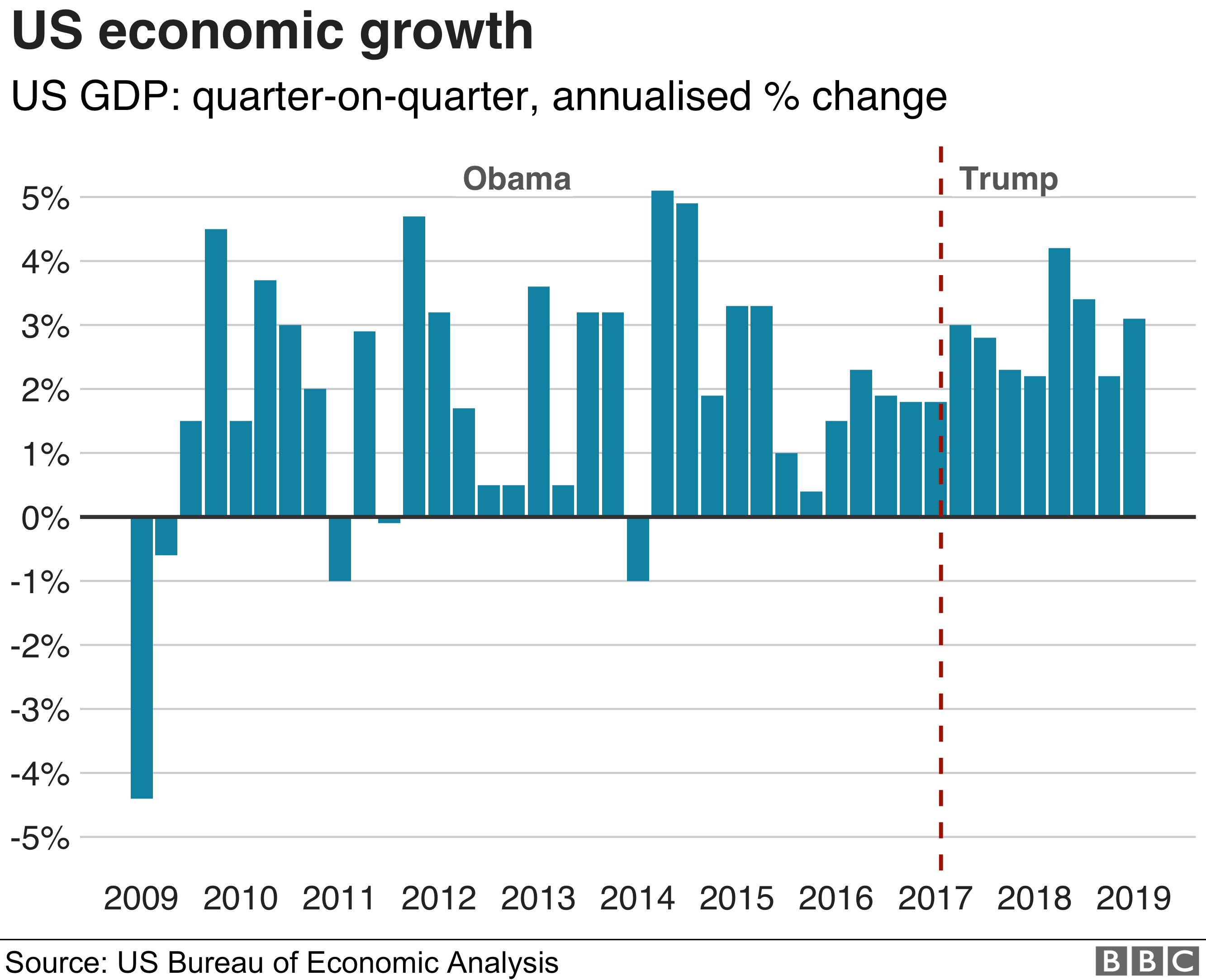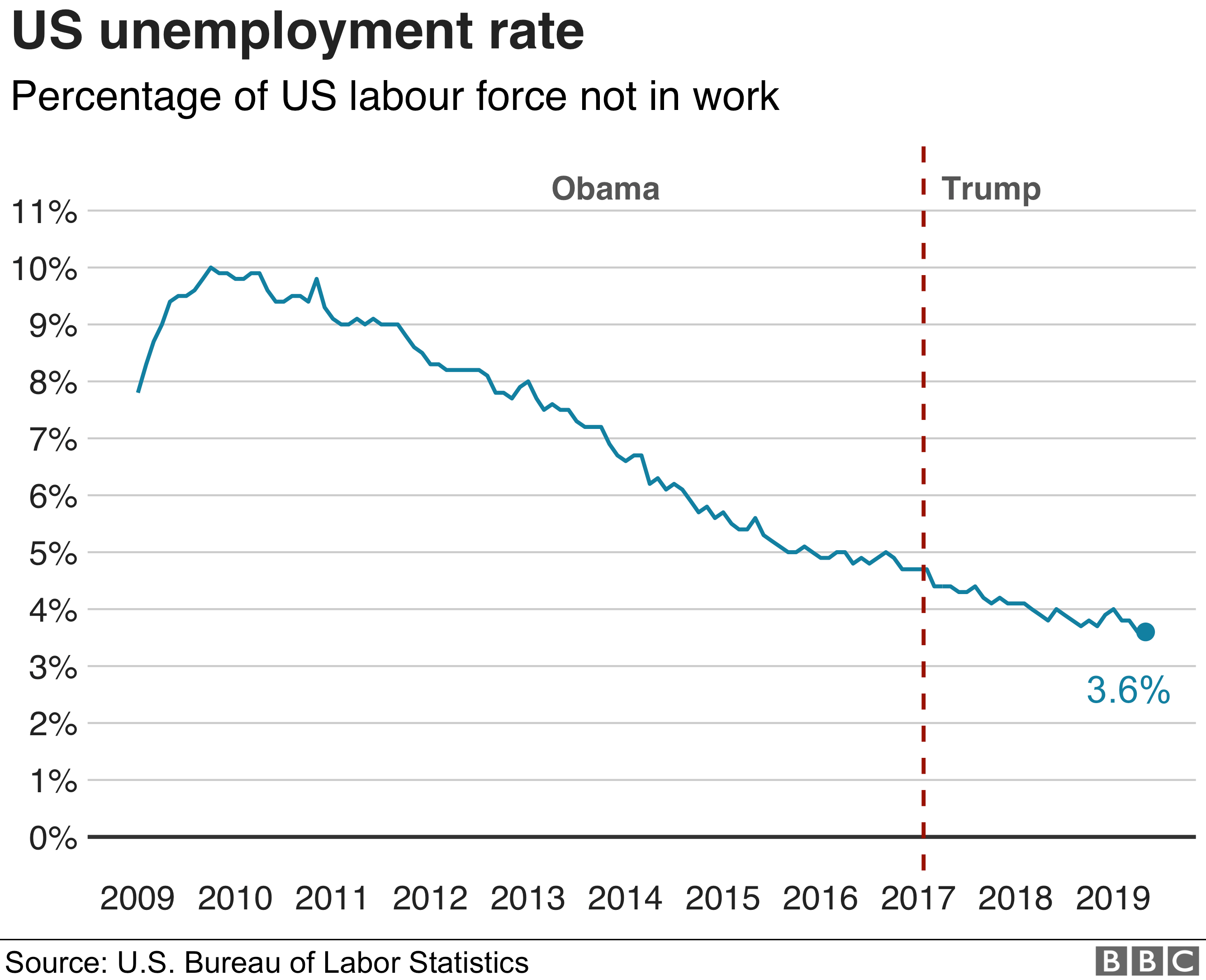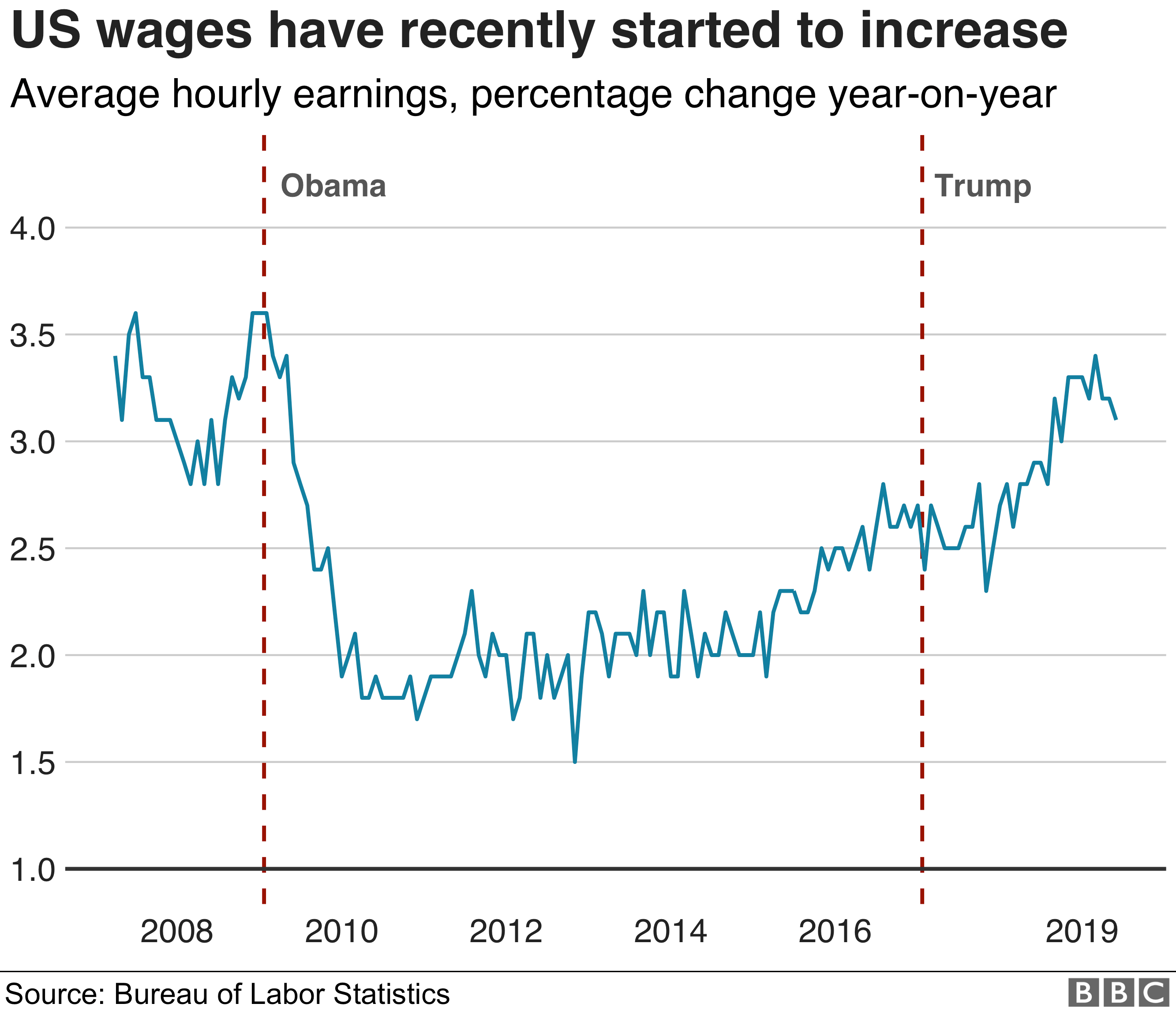
Claim: President Trump says the US economy is perhaps the greatest it's ever been.
He launched his 2020 re-election campaign at a rally in Florida with the familiar claim about the success of the economy under his administration.
According to the Washington Post last year, the president has made the claim - or a variant of it - dozens of times.
Reality Check verdict: Yes, the economy has been doing well - but there have been periods when it was even stronger.
There are some indicators that are less good - and fears over the consequences of a trade war with China have unsettled financial markets.
The growth in GDP - the value of goods and services in the economy - has generally been strong.
The most recent data shows a 3.1% growth for the first quarter of 2019.
This is lower than the 2018 peak of 4.2% (second quarter), which has been the highest level achieved during President Trump's administration.
This is, however, less than the 5.1% achieved in the second quarter of 2014, during the Obama presidency.

And there were times in the 1950s and 1960s when GDP growth was even higher.
"If you choose to look at the health of the economy based on GDP, Mr Trump's claims are suspect when compared to the national economic boom of the post-War years," says Megan Black, assistant professor of history at the London School of Economics.
"The post-War era saw tremendous economic growth, most notably in manufacturing, but also in agriculture, transportation, trade, finance, real estate and mining."
So, the growth indicators currently are good - but not the best ever.
President Trump has highlighted the rising value of US financial markets - in particular the Dow Jones Industrial Average, which follows the shares of 30 major US companies.

It's true the Dow reached record highs under his administration. Mr Trump's supporters argue that his corporation tax cuts along with his US-focused policies, his clampdown on bureaucracy and his promises of infrastructure investment have all helped.
However, in recent months, the index has been highly volatile.
In December 2018, it recorded its biggest weekly drop in percentage terms since 2008.
The sharp fall was attributed to trade tensions with China, interest rate increases and a looming government shutdown that worried the markets.
So, what's happening in the broader economy with employment and wages?

The unemployment rate in May stood at 3.6% - the lowest since 1969.
It's been falling for some years - a downward trend that began during president Barack Obama's time in office.
Ryan Sweet of Moody's Analytics points to the changing profile of the US working population as a key factor here.
There is now a greater proportion of older workers and better educated workers, both of which tend to have lower unemployment rates.
Mr Trump has also highlighted record low levels of African-American unemployment in particular.
He's right in that in May 2018, unemployment for black Americans fell to 5.9%, the lowest figure since the 1970s.
But it increased to 7% in February this year and is currently 6.2%.
Some US media reporting at the time highlighted some important caveats:
And the president's daughter, Ivanka, has tweeted that the unemployment rate for women was at a 65-year low.
Again, that had begun to fall prior to Mr Trump taking office.

As for wages, average hourly earnings growth throughout 2017 was between 2.5% and 2.9% - continuing a generally upward trend which began during President Obama's administration.
This year, wages continued to rise and reached 3.4% in February before slowing slightly.
They are currently rising faster than the rate of inflation, which was 1.8% in May 2019, which means real incomes are rising.
A final measure worth looking at is household income.
Real median household income has been growing for the past three years - but the rate of growth has slowed, according to official figures.
And in September 2018, the US Census Bureau questioned whether its own figure for 2017 - a record high of $61,372 per annum- was that high due to differences in the way surveys had been conducted in previous years.
It's true that the fiscal stimulus, tax cuts and federal government spending rises under President Trump have helped to provide an impetus to growth - even if by some indicators, not everyone may be feeling the benefits.